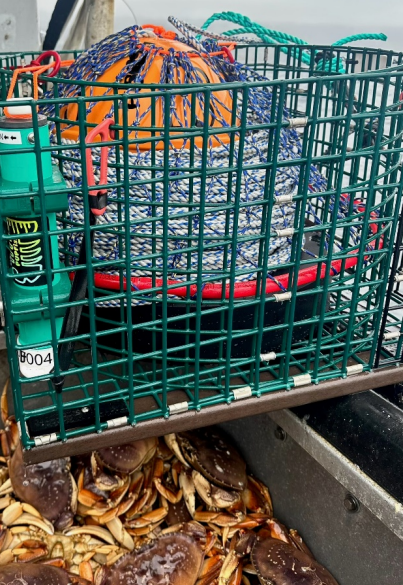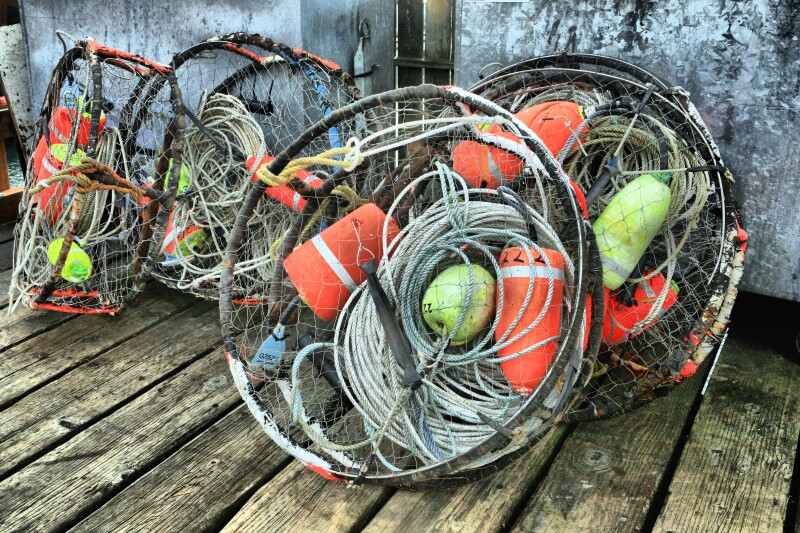A recent trial of innovative ropeless crab fishing gear off the California coast has sparked a heated debate within the Dungeness crab fishing community. While some accept the technology as a breakthrough in reducing whale entanglements, others view it as another complication in an already struggling industry.
Many commercial crabbers remain angry about the trial because it allowed a minimal number of fishermen to fish during the end of the Dungeness breeding season when crabs would typically be biting. This trial, the most extensive testing of pop-up fishing gear to date off the coast of California, allowed select participants to fish during restricted times from April 9 to June 30.
Fishermen who have faced years of economic setbacks from shortened crab seasons and the closure of the king salmon fishery are wary of embracing new gear. Concerns about conversion costs, reliability, and the risk of unintended consequences have created significant pushback among many crabbers.
The trial involved 19 commercial boats to test the viability of pop-up gear. There were over 277 fishing trips and 2361 strings of gear consisting of a total of 23,048 ropeless traps. While most took part in the trial to evaluate the gear firsthand, they acknowledge the learning curve that came with it.
According to sources, local Dungeness crab fishermen Dick Ogg, and Lisa Damrosch, shared that when components of ropeless gear failed, it had to be retrieved with grappling hooks, further suggesting that grappling for gear on its own might be cheaper but viable to traditional gear. Ogg is a highly respected leader and president of the Bodega Bay Fishermen’s Marketing Association; he has worked tirelessly on solutions to whale entanglements in the Dungeness crab industry. Damrosch is the executive director of the Pacific Coast Federation of Fishermen’s Association, which focuses on sustainability and the future of commercial fishing. Both Ogg and Damrosch are part of the Dungeness Crab Gear Working Group.
The crab season had started two months late on January 18, and fishermen were only allowed to fish 50 percent of their normal trap count. South of Mendocino County, the season then closed on April 8, except for the 19 individuals allowed to fish the pop-up gear trial, angering the commercial crabbers not part of the trial.
Sub Sea Sonics and Guardian Ropeless Systems developed the gear used in the trial and “focused on providing gear that is reliable and economical for fishermen.” The gear was fished under an Experimental Fishing Permit (EFP) approved by the California Fish and Game Commission.

“This EFP provided an opportunity for fishers to get hands-on experience with on-demand fishing gear under realistic fishing conditions in the spring Dungeness crab fishery. The success to date should help to provide a pathway to authorization of the gear for the spring fishery so it is available to all fishers,” Bart Chadwick of Sub Sea Sonics stated in a release.
The 19 fishermen in the experiment landed 229,000 lbs. of crab, with an estimated landing value of about $1.6 million. The fishermen paid for the gear they used and had the option to keep it for future use or turn it in for reimbursement through funding from the California Ocean Protection Council.
To conservation groups, the trial seemed promising. However, fishermen remain frustrated over limited fishing opportunities and show a growing concern that external regulations and conservation pressures will continue to shape their livelihoods. As this industry navigates these challenges, the future of crab fishing along the California coast remains uncertain.







